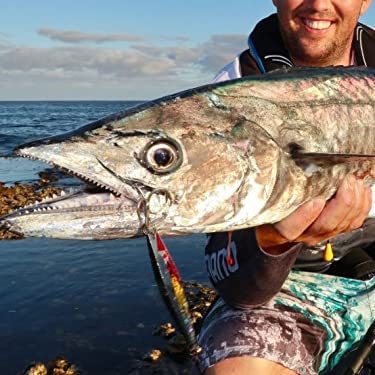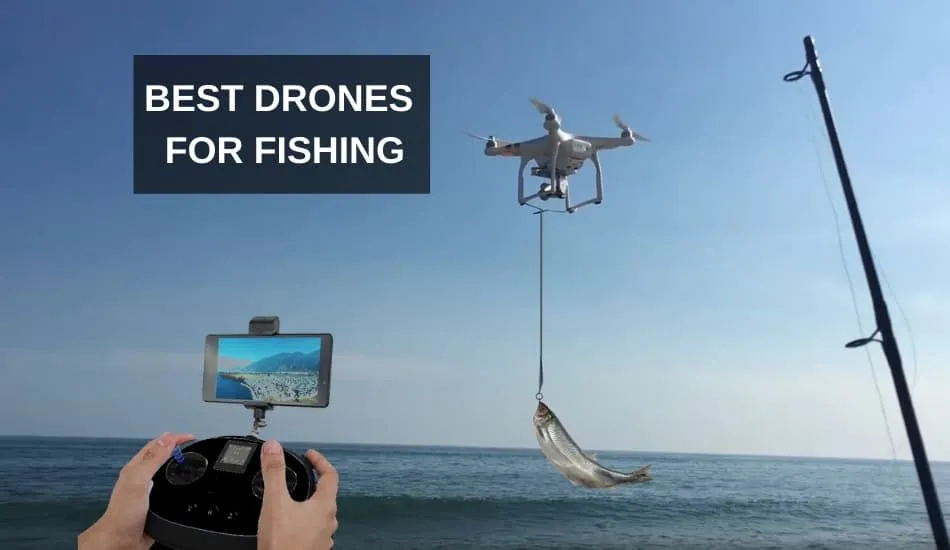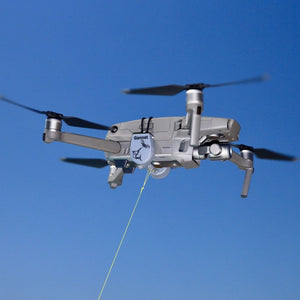
If you are thinking of using a drone to catch fish, it is worth learning more about the regulations. Watch instructional videos about how to fly drones to catch fish. Read our article about drone ethics if you have any questions. Here are some ethical concerns about drone fishing. You can also check out our drone fishing gear guides.
Regulations on drone fishing
It is possible to wonder what regulations apply when you are watching a YouTube video of a drone fishing for fish. While there are many reasons to adhere to local laws, safety is the most important. To protect both your life and that of the fish, you must follow the correct laws. In this article we will cover some of the most important rules and make sure you follow them. Follow the International Game Fish Association guidelines.
Drones are not allowed to operate in public places like stadiums and sporting events. They can't carry weapons or stay within a half-mile of sporting events. Operators of drones must maintain a clear view of their aerial equipment at all time. In addition, drones cannot fly over people, stadiums, or critical infrastructure, as well as be a distraction to emergency response vehicles. If you have any questions about how a drone can be used to fish, please consult your local law enforcement agency.

While many states have adopted laws governing the use of drones, some states have yet to pass them. Illinois recently passed SB 2167. The bill prohibits the operation of drones within state parks without prior permission. It also outlines privacy rights and the rules that must be followed by commercial and recreational drone operators. It also prohibits drones interference with hunters and other wildlife. These new laws are expected to be finalized in a few years.
Ethical concerns about drone fishing
Drone fishing is not without controversy, and the use of such technology is controversial. Companies sell underwater drones that can fish for fish. Many drones have video content that shows the fishing process. It is very similar to casting a line at a fish. The method of removing a fish from the water is a bit different. People who are concerned about ethical issues in fishing might want to consider other options.
While there are obvious advantages to using drones for fishing, some have argued that they may be cheating the fishing population. Even though fishing hasn't changed much over time, drones can be used to catch fish and may reduce the excitement of the chase. Additionally, the use of drones may be problematic for conservation. These are the ethical considerations to consider before you use a drone to fish.

Drone fishing isn't the best option. Drone fishing can be harmful to the environment and could overfish endangered species. Some states may allow drones to be used in recreational fishing. However, others don't. There are many limitations to drone fishing. Cheap drones might lack the GPS functionality, lifting capabilities, or control range needed. In addition, drone fishing can lead loss of fish if lines get tangled. There are also issues with piloting.
FAQ
Are Drones Banned Where?
The FAA has banned drones in areas near airports and stadiums. They are allowed to fly at night by using GPS technology.
With a drone, can someone spy on me?
Yes, anyone can use a drone to spy on you. It is important to be aware of drones and to avoid any areas they may fly. If you notice a drone flying around, call 911 immediately.
What US states do drones are legal in?
It is legal to operate a drone as a hobby. The Federal Aviation Administration (FAA), established guidelines that allow individuals to fly small unmanned aircraft systems. Before they can be flown, these UASs need to be registered with FAA. These UASs can also be flown by commercial operators if they are allowed to fly under certain conditions.
Statistics
- According to the multiple listing service (MLS), houses and apartments with drone photographs are up to 68 percent more likely to sell than those without pictures. (thedroneu.com)
- Research and Markets predict a growth rate of 51.1% over the next five years. (thedroneu.com)
- According to ZipRecruiter, the minimum hourly wage of drone pilots is $20. (thedroneu.com)
External Links
How To
How to Fly Drones With Beginners
A drone refers to a remote-controlled aircraft designed for aerial photography, surveillance and scientific research. Drone technology has been around since World War II. DJI introduced their Phantom series of quadcopters in 2010, but commercial use only began in 2010. There have been many drones made since then. These range from beginner-friendly drones like Parrot AR Drone 2.0 to more advanced multi-rotor craft like DJI Mavic Pro.
There are many ways to fly a drone.
-
Remote control - This method uses a control device attached to your hand, which enables you to steer the drone through its flight path. There are two main types, On/Off switches (like radios) and joysticks.
-
Manual Control – This method lets users remotely control the drone by using a smartphone app. You must keep track of the location where you want the drone to go and follow the instructions from the app.
-
Autonomous Flight - This method involves leaving the piloting duties to the drone itself. The drone is able to fly autonomously, without the need for human intervention. To enable autonomous flight, the drone should have a built in camera and sensors capable recording images and data.
-
Triggered Flying - This method works in the same way as manual control. However, the pilot has to manually set up a route for the drone and it follows that route until reaching the endpoint. After the preprogrammed route is complete, the drone will automatically land and return to its base.
-
Landing Gear - Some drones come equipped with landing gear that allows them to land safely if they lose power or run out of battery during flight.
-
Goggles – Pilots often wear goggles while flying to keep themselves safe from any debris.
-
Camera - You can capture photos and videos with your drone from the air.
-
Obstacles – Some drones have obstacle avoidance systems that stop them from colliding with obstacles.
-
Speed - Drones can reach speeds up to 40 mph.
-
Battery Life - Most drones are capable of lasting between 20 minutes and three hours, depending on the power that you use.
-
Some drones are capable of traveling up to 30 miles depending upon their make and model.
-
Power source - Some drones require an external power source; others work off internal batteries.
-
Weight - Some drones weigh less than 1 pound, whereas other models weigh up to 4 pounds.
-
Size - The size of drones varies from small, easily carried devices to more substantial crafts that weigh in excess of 50 pounds.
-
Price - From high-end models that cost thousands of dollars to low-cost options that start at $100, all drones fall under a certain price category.